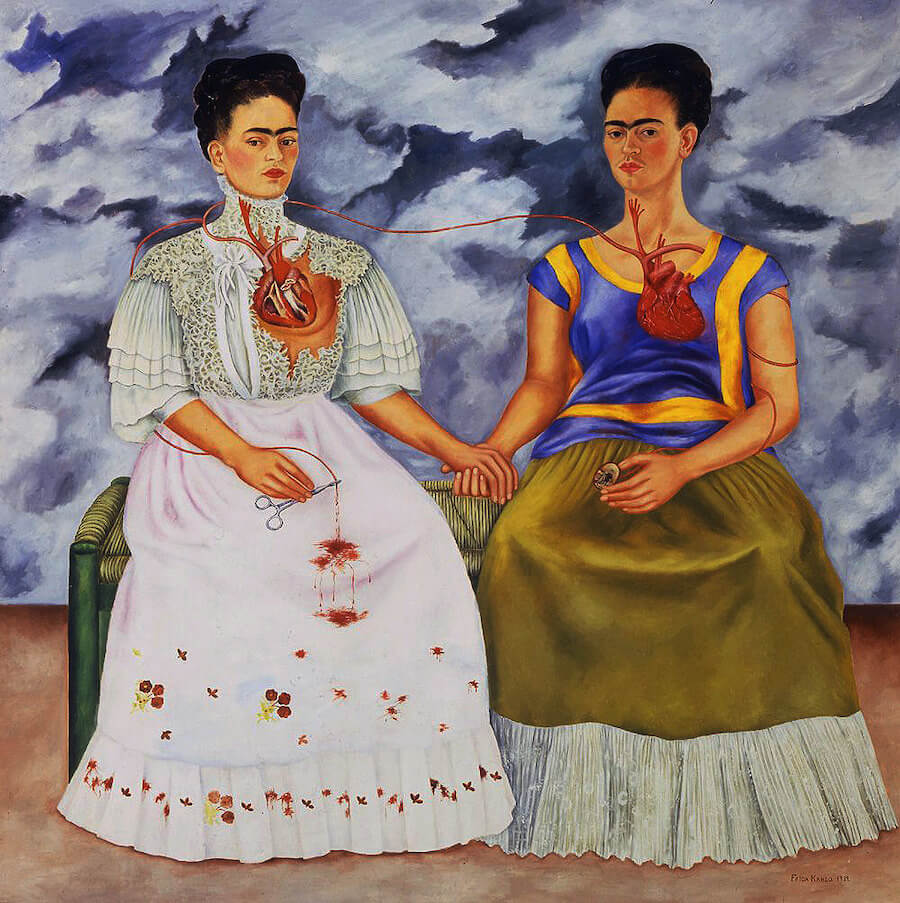A beloved art movement, while also groundbreaking when it first came about, is surrealism which emerged during the early twentieth century right after WWI. It’s defined as art that invokes the inner workings of the human psyche or subconscious through juxtapositions creating symbolism. Along with dadaism emerging only a few years before, the symbolic absurdities remained throughout surrealism. The meaning behind the movement (along with expressionism and dadaism) requires higher level thinking for the viewer to understand than previous centuries’ artworks. Surrealism’s goal is to illustrate the merging of dreams with reality, a mystical and intriguing concept for the viewer to make sense of. Examples of surrealist artists include the most well known Salvador Dalí, along with Leonora Carrington.
The meaning behind a surrealist piece is not always obvious and the viewer must dissect it like a puzzle. Keep in mind that interpretation and meaning differ. No matter which era of art the artwork’s interpretation is subjective to the viewer thus having them form their own reaction and opinion. Unraveling the artist’s meaning behind a surrealist work is what makes it so special. Surrealism gives power to the artist to invoke a whole new idea. The meaning behind those pieces were quite literal, unlike surrealist pieces. Even within the more recent preceding years of surrealism the expressionist (art that conveys a feeling) and dada movements’ subject matter were more relatable because groups of people have either felt that emotion or have joked about what’s mainstream. Surrealism opens creative possibilities for the artist to share their distinct, personal, precious dream state.
The first and perhaps most well known surrealist piece is Salvador Dali’s The Persistence of Memory. The landscape background is of his view of the Mediterranean and the Sierra de Rodes from his cottage home. The clocks do not hold their original form as they appear to be melting. The pink matter figure is often interpreted to be Dali himself based on the similar nose structure and which many viewers perceive as flesh to soon be rotting. The fly and the ant correlation at the bottom left of the composition has been thought to speak upon the relation of flies carrying disease which can demolish an ant colony. The meaning viewers find behind it is displayed as grim, in that memories fade. To achieve what is shown on the canvas, before beginning his surrealist works Dali, gained knowledge about the subconscious through Sigmund Freud who had developed the renowned psychoanalysis technique. The artist used what he learned from Freud to do the following, “The year before this picture was painted, Dalí formulated his ‘paranoiac-critical method, cultivating self-induced psychotic hallucinations in order to create art. “The difference between a madman and me,” he said, ‘is that I am not mad.’”1 Thus, accepting his eccentric brilliance caused the pioneering of a whole new art movement. This is similar to Lenora Carrington’s work because the two artists portray an unseen reality.
Leonora Carrington’s intriguing And Then We Saw the Daughter of the Minotaur also comes with lots of symbolism to dissect and put together to unveil its meaning. She was very into mystical concepts such as witchcraft to begin with. Clouds and stars are juxtapositioned underneath the ceiling. A minotaur is displayed with tiny hands performing witchcraft. The boys wearing a cloak could refer to the cloak’s symbolism of their identity being transformed. A rose is displayed that appears to be tampered with, however there’s also white feminine dancing figure with a disproportionately large flower coming from her head with a bright light only shining upon that figure. Nearby there are two white whippet dogs, the only creatures that notice the light, relating to the speculation that animals see spirits that people do not. Throughout the painting are crystal balls scattered. In the background but not centered is the abstract, almost indescribably flowing green figure with a small cross at the top of it. One analysis points out Carrington rewriting the Greek mythology of Theseus conquering the minotaur then travelling the labyrinth of conquering subconscious desires. Carrington does not display the minotaur as conquered and the feminine nuances are not subdued but rather empowered. It’s a surrealistic piece because the story is juxtapositioned but the storyline’s theme about the subconscious. The artist explains that we live in a visual world that changes so much that it’s not worth spending the time that people do to make sense of it, which fits into the lens of a surrealist.

There is much to unpack when it comes to understanding the meaning of surrealist artwork. The artist displays a scenario that has not yet been seen by anyone else by using juxtapositions. Dream states allow for this. During the times of the two World Wars when conformity was the norm, producing art that’s subject matter was entirely unique to the artist was controversial but nonetheless gained much attention. It took more than just artistic skill, which was the standard upheld for art beforehand. Surrealism portrays the subconscious, which is incredible since it isn’t tangible.
Bibliography
“Horns of the Goddess: The Minotaur in the Work of Varo, Carrington, and Lam.” Ebrary. Accessed November 15, 2021. https://ebrary.net/153654/psychology/horns_goddess_minotaur_work_varo_carrington.
Lynley. “Symbolism of Coats and Cloaks.” SLAP HAPPY LARRY. October 31, 2021. Accessed November 14, 2021. https://www.slaphappylarry.com/symbolism-coats-cloaks-robes/.
“Salvador Dalí. The Persistence of Memory. 1931: MoMA.” The Museum of Modern Art. Accessed November 14, 2021. https://www.moma.org/collection/works/79018.
Tate. “Surrealism – Art Term.” Tate. Accessed November 11, 2021. https://www.tate.org.uk/art/art-terms/s/surrealism.
“The Meaning of Salvador Dali’s Famous “Melting Clocks” Painting: The Persistence of Memory.” EmptyEasel.com. October 26, 2021. Accessed November 14, 2021. https://emptyeasel.com/the-persistence-of-memory-famous-melting-clocks-painting-by-salvador-dali/#history-of-surrealism.


